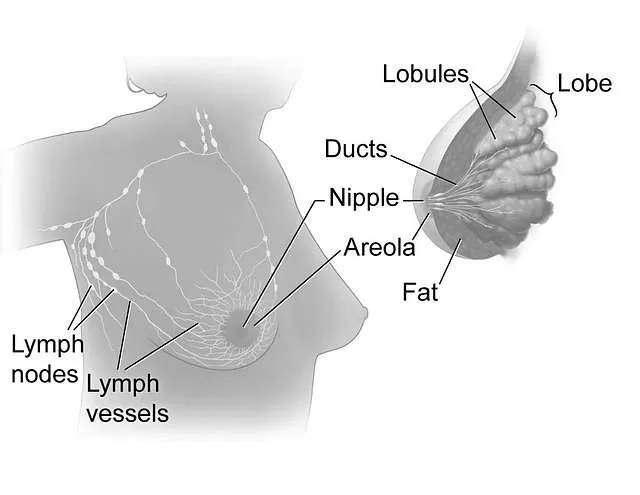Kudos to every mum who utilizes the breast as a biological structure to feed their young ones, giving them the nutrients, antibodies, and other things that are needed. And so today, we are going to be looking at the breast as a biological structure, explaining it anatomically, looking at its biological function in full, milk, and the content of breast milk.
In females, estrogen is released drastically during puberty and they are released from the ovaries. This hormone helps to promote female secondary sex characteristics including the breast tissue enlargement. The breast is composed of mamory glands, adipose tissue and connective tissues and with estrogen increase, the mammory gland growth is promoted, an the deposition of fat in the breast which increases the overall size and mass of the breast.
Talking about the breast location, it is superficial to the pectoralis major muscle and the serratus anterior. The breast connects to this tissue with a layer of fascia and is supported by connective that run from the fascia to the skin and it is suspended through the suspensory ligament of the breast known as Cooper's ligaments. That is the ligament that looses up leading to the sagging of the breast as the female becomes more older. This ligament can also be affected by stress on the breast like exercises such as jogging over a long period of time and other activities that impacts the breast. That is why women are advised t use sport bra when performing exercises.
While there are sweat glands in the breast, the mammory gland is a modified sweat gland but this time around, its function is to produce milk and not sweat. Each breast contains 15 to 20 lobes of mammory glands releasing milk. The lobes are separated by adipose tissues, and the tissues are what determines the size of a breast. So when you see a person with a big breast size, it is because there is an increased number of adipose tissues in the breast.
Each lobe in the mammory gland of a woman's breast is made up of lobules which are made p of grape-like structures called alveoli that is made up of the milk secreting cells. This cells do not produce milk all round a person's life, during pregnancy, the pituitary gland releases the hormone prolactin which increases in the body causing the production of milk. Prolactin is produced in the 5th week of pregnancy and will keep rising till birth. During pregnancy, a woman tend to see more increment in breast size and other female secondary sex organs, and this is because the placenta releases more estrogen and progesterone.
In all this, the estrogen and progesterone inhibit the secretion of milk during pregnancy, and lactation only begins when the child is born. Few days after birth when the breast begin to secrete milk, it secretes colostrum. Colostrum contains high level of immunoglobulins, growth factors, and antimicrobial peptides which will support children's growth and boost the immune system of the baby. Over the next few weeks, the breast begins to mature and become white.
Although the alveoli produces milk often, the milk doesn't reach the duct until about 30 seconds after the child begins to suckle. When the child begins to suckle, sensory nerves sends signal to the spinal cord which then reaches the hypothalamus which instruct the posterior pituitary gland to release oxytocin, while the anterior pituitary gland to release prolactin.
These hormones reaches the breast tissues with prolactin causing the production of milk in the alveoli while oxytocin allows the myoepithelial cells in the alveoli to contract which causes the milk to move from the alveoli to the duct in a process known as milk ejection (let down). The hypothalamus is responsible for controlling emotions and so when the mother hears the baby cry or when she is fondling the baby, the process of milk production happens since the hypothalamus process emotional signal.
When you give a baby milk, you are giving them 88.5% water, 3.3% fat, 6.8% lactose, 0.9% Casein, 0.4% lactalbumin and other proetin, and 0.2% ash (minerals and calcium). When mothers are producing milk, they can burn up to 600 calories daily.
Breastfeeding is a remarkable biological process, intricately linked to the anatomy and physiology of the breast. From hormonal changes during puberty and pregnancy to the precise mechanisms of milk production and secretion, the female breast plays a crucial role in nourishing and protecting newborns. Understanding this process underscores the incredible adaptability and efficiency of the human body in supporting new life.
Reference For More
https://www.ncbi.nlm.nih.gov/books/NBK534827/
https://www.lifespan.org/centers-services
https://www.ncbi.nlm.nih.gov/books/NBK519575/
https://pathology.jhu.edu/breast/overview
https://www.ncbi.nlm.nih.gov/books/NBK148970/
https://www.ncbi.nlm.nih.gov/books/NBK539790/
https://www.ncbi.nlm.nih.gov/books/NBK547666/


